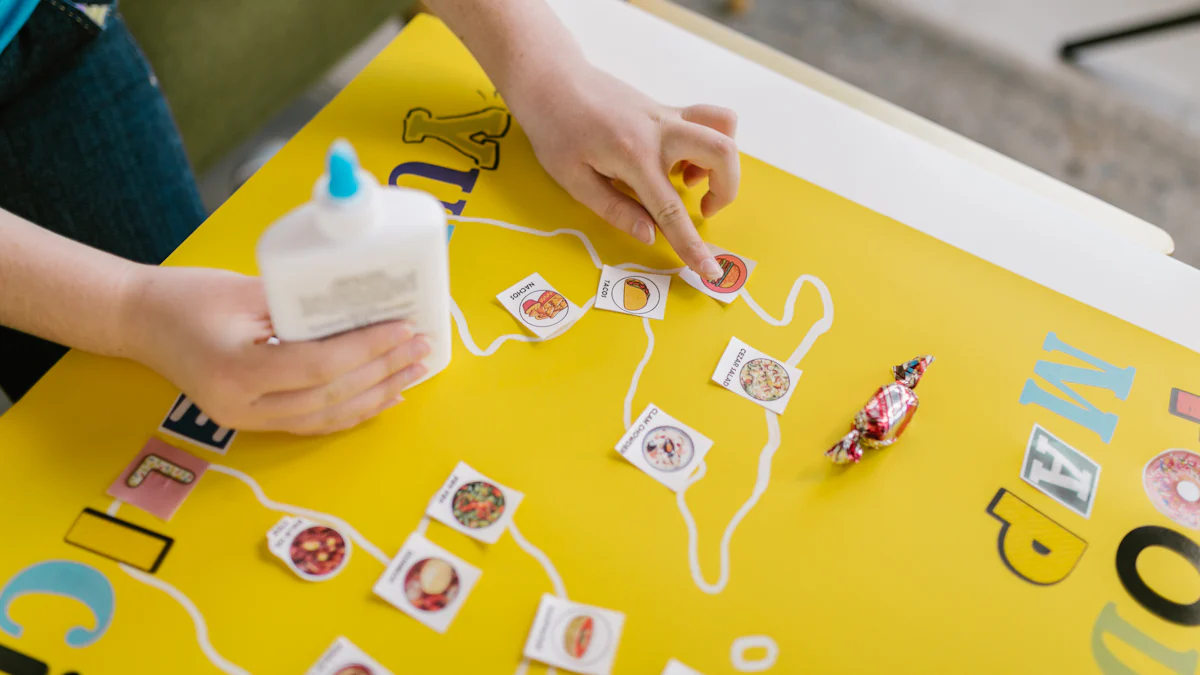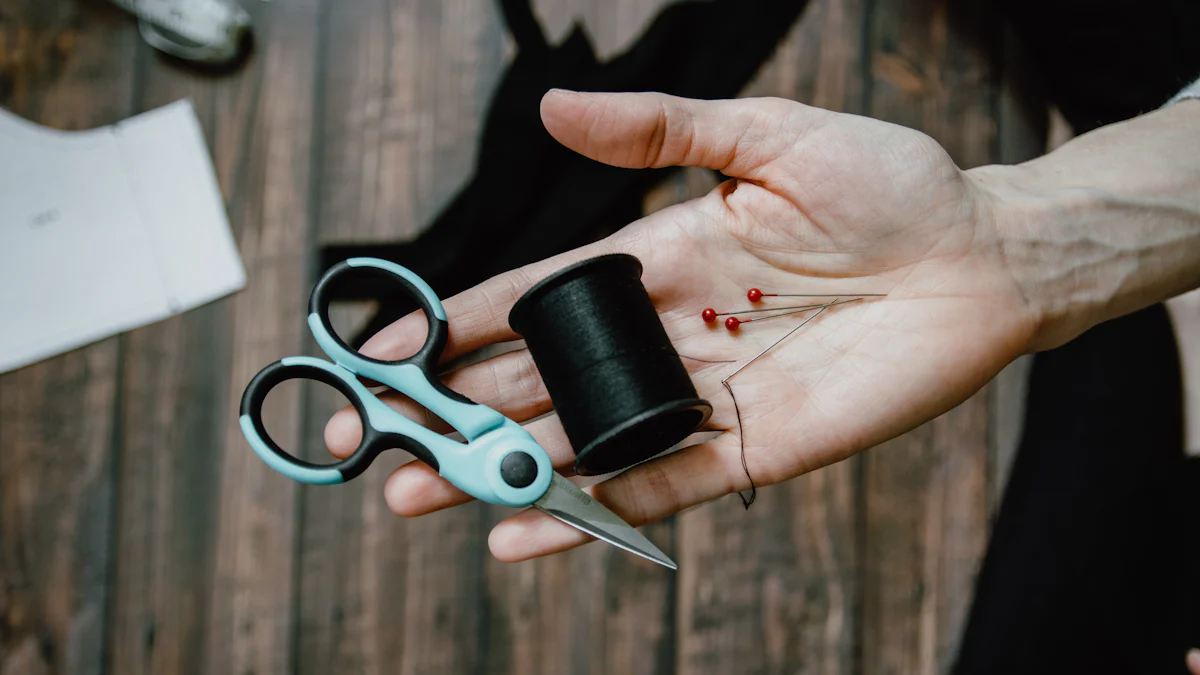How to Use Die Cut Without Machine Easily

You don’t need a fancy machine to create stunning die cuts for your crafts. With just a few simple tools, like scissors or craft knives, you can achieve precise and professional results. Many crafters even prefer manual methods because they offer more control and creativity. For example, using stencils or templates allows you to design intricate patterns without relying on expensive equipment. Plus, hand-cutting adds a personal touch to your projects, making each piece unique. Whether you’re a beginner or an experienced crafter, learning how to use die cut without machine opens up endless possibilities.
Key Takeaways
- You can achieve stunning die cuts using simple tools like scissors and craft knives, giving you more control and creativity over your designs.
- Stencils are invaluable for creating consistent and professional-looking cuts; consider layering them for unique patterns.
- Pre-cut shapes and downloadable templates can save time and simplify your crafting process, making it easy to create beautiful projects quickly.
- Household items, such as cookie cutters and bottle caps, can serve as effective die cutting tools, encouraging resourcefulness and creativity.
- Selecting the right materials is crucial for clean cuts; opt for sturdy yet easy-to-cut options like cardstock and thin foam sheets.
- Patience and precision are key to achieving professional results; take your time and practice on simpler shapes before tackling complex designs.
- Manual die cutting is beginner-friendly and cost-effective, allowing you to explore your creativity without the need for expensive machines.
Manual Die Cutting Techniques

How to Use Scissors and Craft Knives for Die Cutting
Scissors and craft knives are your best friends when it comes to manual die cutting. These tools give you complete control over your designs, allowing you to create intricate shapes and patterns with precision. Start by choosing a sharp pair of scissors or a high-quality craft knife. Dull tools can tear your material, so keeping them sharp ensures clean cuts.
To begin, trace your desired design onto the material you’re cutting. You can use a pencil for light marks that are easy to erase later. Hold the scissors firmly and cut along the lines slowly. For curved or detailed designs, small scissors work better because they allow for tighter turns. If you’re using a craft knife, place your material on a cutting mat to protect your workspace. Apply steady pressure and follow the outline carefully.
Here’s a quick tip: Practice on scrap paper before working on your final project. This helps you get comfortable with the tools and improves your accuracy. With patience and practice, you’ll find that scissors and craft knives can produce results that rival those of a die cutting machine.
Creating Designs with Stencils for Precise Cuts
Stencils are a game-changer for manual die cutting. They act as guides, helping you achieve consistent and professional-looking designs without much effort. You can buy pre-made stencils or create your own using sturdy materials like cardboard or plastic sheets.
To use a stencil, place it over your material and secure it with tape to prevent slipping. Trace the design with a pencil or pen, then cut along the lines using scissors or a craft knife. For more intricate patterns, a craft knife works best because it allows for detailed cuts. Always use a cutting mat to avoid damaging your table.
If you’re feeling creative, try layering multiple stencils to create unique designs. For example, you can combine geometric shapes with floral patterns for a custom look. Stencils not only make the process easier but also open up endless possibilities for your projects.
By mastering these techniques, you’ll discover how to use die cut without machine effectively. These methods are not only cost-effective but also give you the freedom to experiment and add a personal touch to your crafts.
How to Use Pre-Cut Die Shapes Without a Machine
Buying Pre-Cut Shapes for Crafting
Pre-cut die shapes are a fantastic option when you want to skip the cutting process entirely. These ready-made shapes come in various designs, sizes, and materials, making them perfect for a wide range of crafting projects. You can find them in craft stores, online marketplaces, or even specialty shops that cater to DIY enthusiasts.
When shopping for pre-cut shapes, look for sets that match your project theme. For example, floral shapes work well for greeting cards, while geometric patterns suit modern scrapbooking layouts. Many brands offer themed collections, so you can easily find shapes for holidays, birthdays, or other special occasions.
Using pre-cut shapes is simple. Just select the design you like, and attach it to your project using glue, double-sided tape, or adhesive dots. If you want to add dimension, try layering multiple shapes or using foam tape to create a 3D effect. This approach saves time and ensures consistent results, especially if you’re working on bulk projects like party decorations or invitations.
Pro Tip: Keep a variety of pre-cut shapes in your crafting stash. They’re great for last-minute projects or when you need a quick creative boost.
Downloading and Printing Templates for Manual Cutting
Templates are another excellent way to create die-cut designs without a machine. Many websites offer free or affordable downloadable templates that you can print at home. These templates often include intricate patterns and unique shapes that would be challenging to draw by hand.
To get started, search for templates that suit your project. Look for designs labeled as “printable” or “manual cutting templates.” Once you’ve downloaded a template, print it on sturdy paper or cardstock. This makes it easier to trace the design onto your chosen material.
After printing, cut out the template carefully. Use it as a guide by placing it over your material and tracing the outline with a pencil. Then, cut along the traced lines using scissors or a craft knife. Templates are especially useful for creating repeatable patterns, like stars for a garland or hearts for a Valentine’s Day card.
Quick Tip: Laminate your printed templates to make them more durable. This way, you can reuse them for multiple projects without worrying about wear and tear.
By combining pre-cut shapes and printable templates, you can explore endless possibilities in crafting. These methods not only simplify the process but also allow you to focus on the creative aspects of your projects. Whether you’re a beginner or an experienced crafter, learning how to use die cut without machine becomes much easier with these tools.
DIY Die Cutting Tools and Techniques

Using Craft Punches for Simple Die Cutting
Craft punches are one of the easiest tools to use for manual die cutting. They come in various shapes and sizes, making them perfect for creating consistent designs quickly. Whether you’re working on greeting cards, scrapbooks, or party decorations, craft punches can save you time while adding a professional touch to your projects.
To use a craft punch, select the shape that fits your design. Place your paper or material into the punch, ensuring it aligns with the cutting area. Press down firmly to cut out the shape. The result is a clean, precise cut that’s ready to use. Craft punches work best with thinner materials like paper, cardstock, or foam sheets.
Pro Tip: For a unique look, layer punched shapes in different colors or textures. This adds depth and dimension to your crafts.
Craft punches are especially useful for repetitive tasks. For example, if you need multiple stars for a garland or dozens of hearts for wedding invitations, a punch can handle the job efficiently. They’re also beginner-friendly, so you don’t need advanced skills to get started.
Embossing Folders and Rolling Pins for Unique Effects
Embossing folders and rolling pins can transform your projects by adding texture and dimension. These tools don’t cut shapes but instead create raised patterns on your material, giving it a professional and artistic finish.
To use an embossing folder, place your paper or cardstock inside the folder. Apply pressure by rolling over it with a rolling pin or pressing it down firmly with your hands. The folder’s design transfers onto the material, leaving a beautiful embossed effect. You can find embossing folders in various patterns, from floral designs to geometric shapes.
Rolling pins can also be used creatively. Wrap a textured material, like lace or bubble wrap, around the rolling pin. Roll it over your paper to create unique patterns. This method is perfect for adding a personal touch to gift wraps, greeting cards, or scrapbook pages.
Quick Tip: Highlight the embossed areas by lightly brushing them with ink or paint. This makes the patterns stand out even more.
Embossing techniques are a great way to elevate your crafts without needing a machine. They’re simple, cost-effective, and add a tactile element that enhances the overall design.
Household Items as Creative Die Cutting Tools
You don’t always need specialized tools to achieve stunning results. Everyday household items can double as creative die cutting tools, proving that crafting doesn’t have to be expensive.
For instance, cookie cutters are excellent for tracing shapes onto paper or fabric. Simply place the cutter on your material, trace the outline, and cut it out with scissors or a craft knife. This method works well for creating themed designs, like stars for a holiday project or hearts for Valentine’s Day crafts.
Another idea is to use bottle caps or lids to create circular shapes. These items are easy to find and can help you achieve consistent results. For more intricate designs, try using items like doilies or lace as stencils. Lay them over your material, trace the patterns, and cut them out carefully.
Fun Idea: Experiment with unconventional items like leaves or pressed flowers. Use them as stencils or templates to add a natural and organic feel to your projects.
Household items encourage creativity and resourcefulness. They show you how to use die cut without machine while keeping costs low and making the most of what you already have.
By exploring these DIY tools and techniques, you’ll discover endless possibilities for your crafting projects. These methods not only save money but also allow you to personalize your designs in ways that machines can’t replicate.
Tips for Success in Manual Die Cutting
Selecting the Right Materials for Clean Cuts
Choosing the right materials plays a huge role in achieving clean and precise cuts. Not all materials respond the same way to manual cutting tools like scissors or craft knives. For the best results, stick to materials that are sturdy yet easy to cut, such as cardstock, thin foam sheets, or lightweight fabric. These materials hold their shape well and allow for smoother cutting.
When working with intricate designs, avoid overly thick or fibrous materials. These can fray or tear, making it harder to achieve a polished look. If you're unsure about a material, test it on a small section first. This helps you understand how it reacts to your tools and prevents wasting your crafting supplies.
Pro Tip: Keep your tools sharp. Dull scissors or craft knives can snag or tear your material, ruining your design. Regularly sharpen your tools or replace blades to maintain precision.
Experts in die cutting often emphasize the importance of matching the tool's pressure to the material. While you may not have a machine to adjust pressure automatically, you can control it manually. For example, apply steady, even pressure when using a craft knife to avoid jagged edges. This simple adjustment can make a big difference in the quality of your cuts.
Practicing Patience and Precision for Professional Results
Patience is your best friend when it comes to manual die cutting. Rushing through the process often leads to mistakes, uneven cuts, or damaged materials. Take your time to trace designs carefully and cut along the lines with steady hands. If you're working on a detailed pattern, break it into smaller sections to make the task more manageable.
Precision is equally important. Always use a cutting mat to stabilize your material and protect your workspace. This ensures that your cuts are clean and consistent. For curved or intricate designs, use small, sharp scissors or a fine-tipped craft knife. These tools give you better control and allow you to navigate tight corners with ease.
Quick Tip: Practice makes perfect. Start with simple shapes before moving on to complex designs. Over time, you'll develop the skills and confidence needed to tackle more challenging projects.
Professional die cutters often rely on advanced machinery for accuracy, but you can achieve similar results with practice and attention to detail. Focus on mastering the basics, like maintaining steady pressure and following outlines precisely. These habits will help you create professional-looking designs without the need for expensive equipment.
By selecting the right materials and honing your skills, you'll discover how to use die cut without machine effectively. These tips not only improve your results but also make the crafting process more enjoyable and rewarding.
You don’t need a machine to create stunning die-cut designs. By using manual techniques, pre-cut shapes, and DIY tools, you can achieve professional results while enjoying the creative process. These methods are cost-effective and accessible, making them perfect for crafters of all skill levels. Manual die cutting also gives you more control and adds a personal touch to your projects. Start crafting today and explore how to use die cut without machine to bring your ideas to life. The possibilities are endless, and the satisfaction is unmatched!
FAQ
What are the advantages of manual die cutting compared to electronic machines?
Manual die cutting offers portability and simplicity. You don’t need electricity or software to operate it, making it ideal for crafting on the go. It also gives you hands-on control, which many crafters find more satisfying. On the other hand, electronic machines require electricity and a computer to function. While they can handle intricate designs with ease, they often come with a steeper learning curve and higher costs.
Quick Tip: If you enjoy a tactile crafting experience and want to save money, manual die cutting might be the better choice for you.
What are the main methods used in die cutting?
Die cutting typically involves three main methods: steel rule, rotary, and laser cutting. Steel rule cutting uses sharp metal dies to press into materials, making it great for thicker materials like cardboard. Rotary cutting involves rolling blades, which work well for continuous patterns. Laser cutting uses precision lasers to create intricate designs, but it requires specialized equipment.
Pro Tip: Choose the method that best suits your project’s material and design complexity.
Can I achieve professional results without a die cutting machine?
Absolutely! With the right tools and techniques, you can create stunning designs manually. Scissors, craft knives, stencils, and even household items like cookie cutters can help you achieve precise cuts. Practicing patience and using high-quality materials will elevate your results to a professional level.
What types of die cutters are available?
Die cutters come in various forms, including manual and digital options. Manual cutters rely on physical dies and don’t require electricity, making them simple and portable. Digital cutters, however, use software and electronic controls to cut designs, offering more precision and automation.
Fun Fact: Manual cutters are perfect for beginners, while digital ones cater to advanced crafters looking for intricate designs.
How do manual and digital die cutting machines differ?
Manual machines use metal dies and require physical effort to cut materials. They’re straightforward and don’t need electricity or software. Digital machines, on the other hand, rely on computers and software to create designs. They electronically control the cutting process, allowing for more complex and detailed patterns.
Key Takeaway: Manual machines are budget-friendly and portable, while digital machines offer advanced features but come at a higher cost.
What materials work best for manual die cutting?
Materials like cardstock, thin foam sheets, and lightweight fabric are ideal for manual die cutting. These materials are sturdy yet easy to cut, ensuring clean and precise results. Avoid overly thick or fibrous materials, as they can fray or tear during the cutting process.
Quick Tip: Always test a small section of your material before starting your project to ensure it cuts smoothly.
Are there any cost-effective alternatives to buying a die cutting machine?
Yes! You can use pre-cut shapes, printable templates, or household items like cookie cutters to create designs. These methods save money and still allow you to craft beautiful projects. Craft punches and embossing folders are also affordable tools that add variety to your designs.
How can I improve my manual die cutting skills?
Practice is key. Start with simple shapes and gradually move to more intricate designs. Use sharp tools and a cutting mat to ensure precision. Take your time and focus on steady, controlled movements. Over time, your skills will improve, and you’ll feel more confident tackling complex projects.
Pro Tip: Keep experimenting with different tools and materials to discover what works best for you.
Is manual die cutting suitable for beginners?
Yes, manual die cutting is beginner-friendly. It doesn’t require expensive equipment or advanced skills. With basic tools like scissors, craft knives, and stencils, you can start creating right away. The hands-on approach also helps you learn and improve quickly.
Encouragement: Don’t worry about perfection at first. Enjoy the process and let your creativity shine!
See Also
Creative Ways to Utilize Die Cuts Manually
Steps to Effectively Operate a Die Cutting Machine
Beginner's Guide to Operating a Die Cutting Machine
Five Innovative Techniques for Die Cut Machine Use
Understanding Die Cutting Machines: Essential Tips for Newbies
